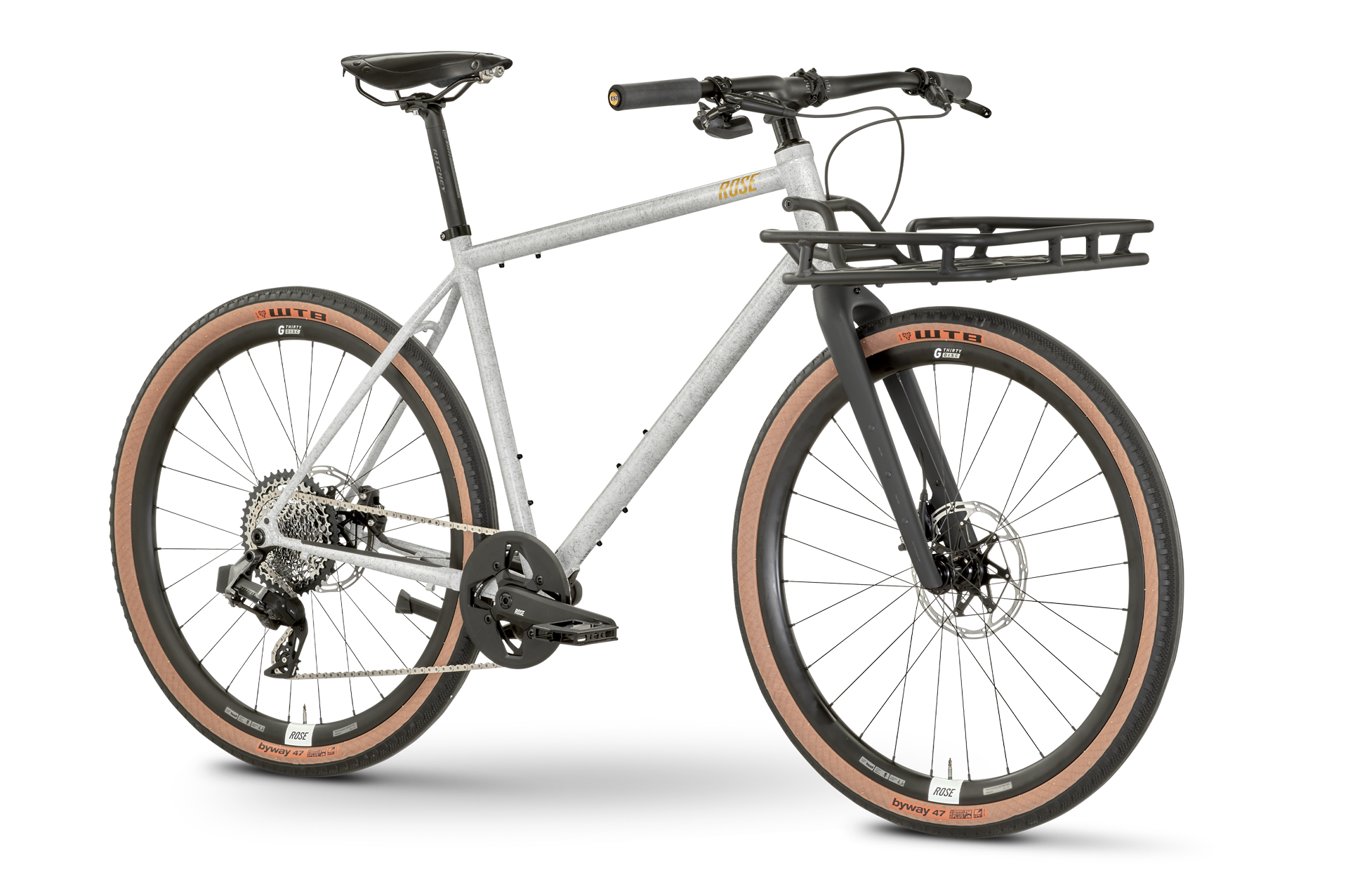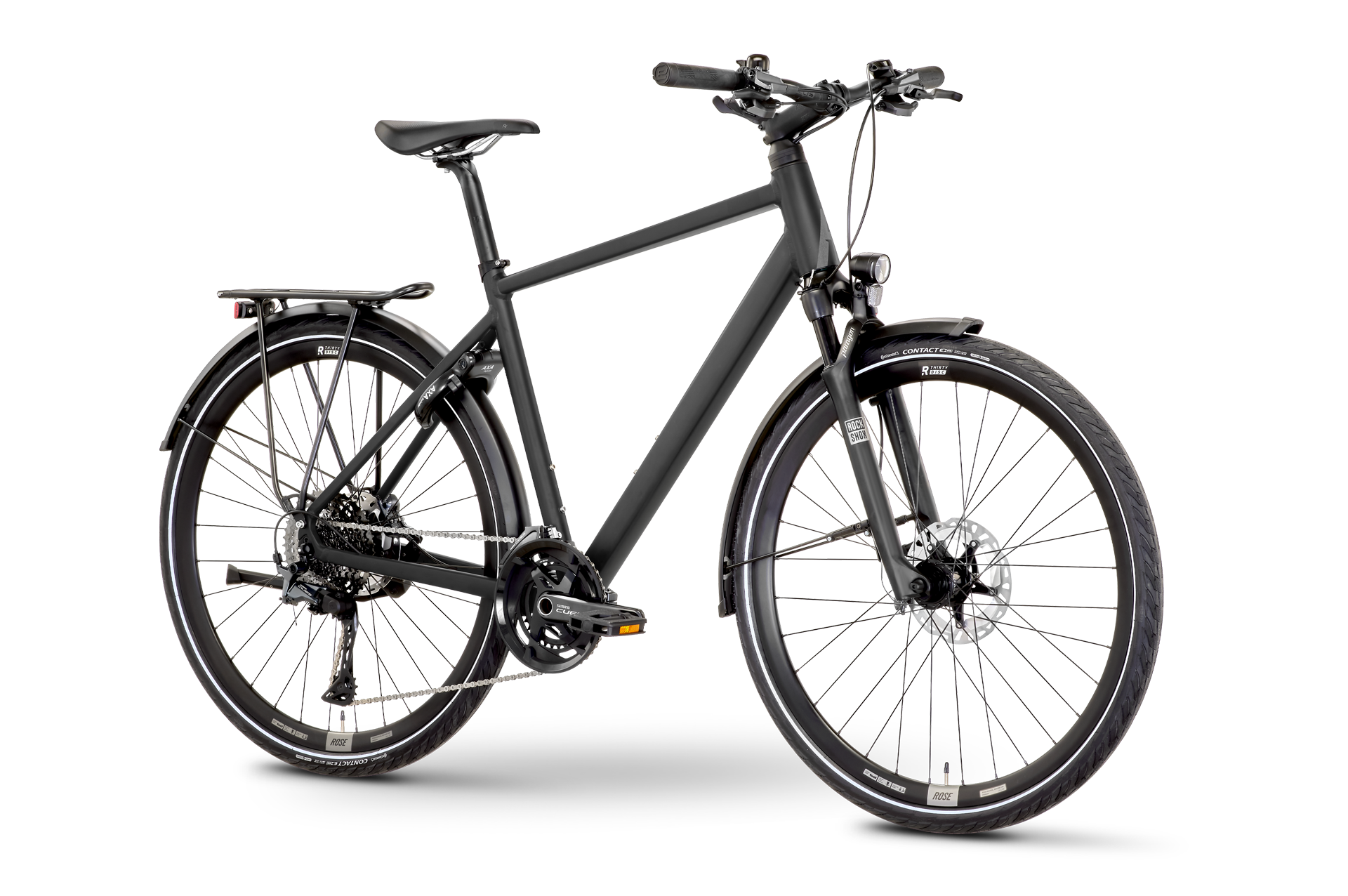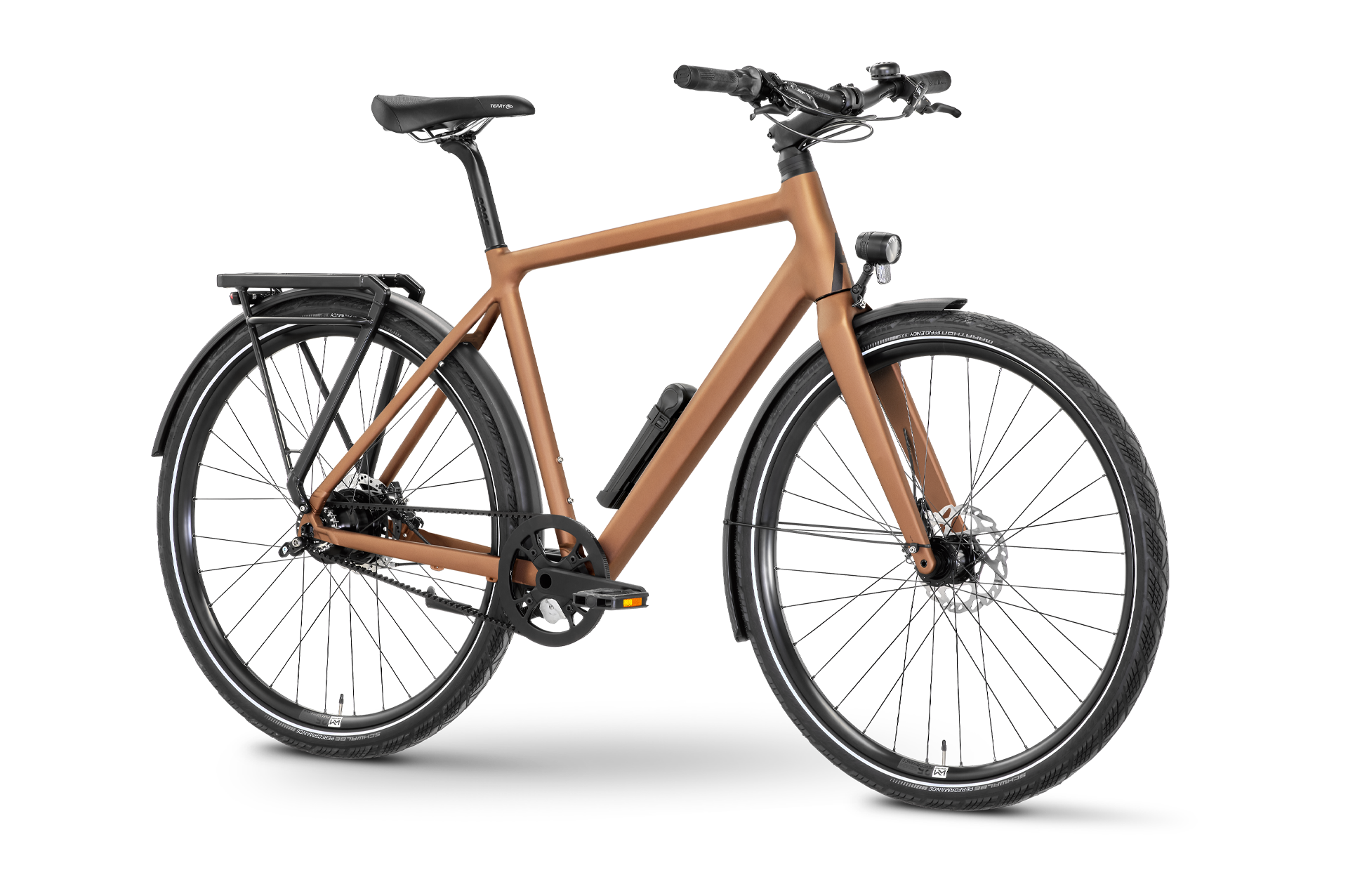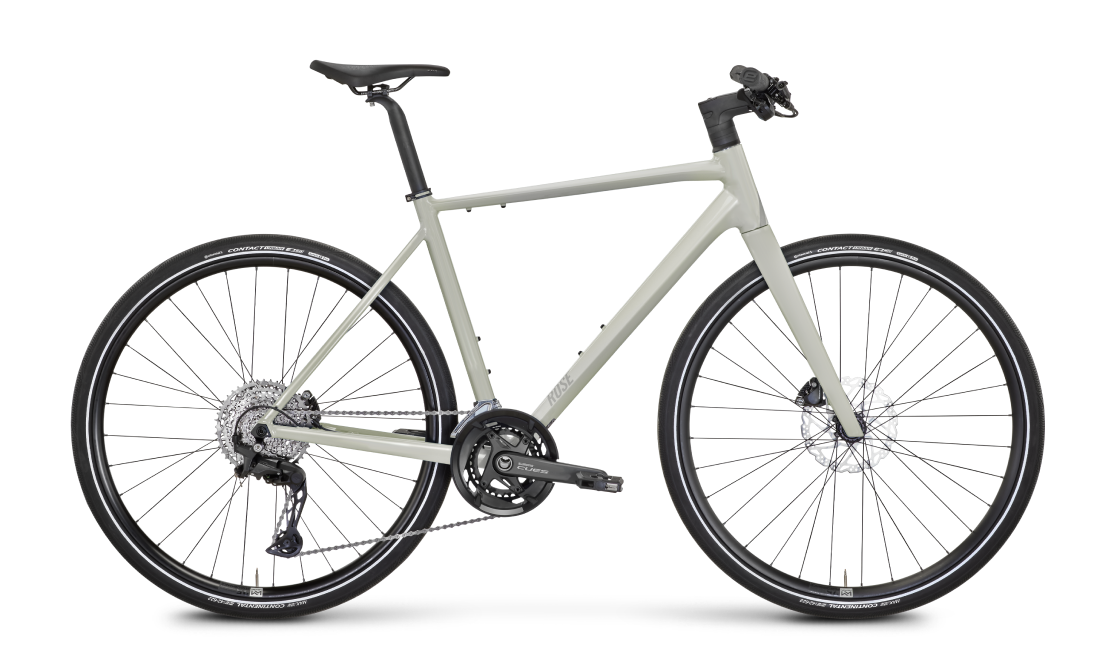Urban & Hybrid
Urban
Hybrid
Which bike suits you best?
Consultation
Do you need help?
Urban/Hybrid Buyer’s Guide
The most important facts in brief
The urban and hybrid segment is the right place for you if you want to combine the useful with the pleasant and bring more movement into your everyday life. But what are your priorities and which bike is the right one for you? Let's find out and start with a few simple questions that require no prior knowledge. This way, you will quickly find yourself when the topic gets deeper.
- What do you mainly want to use your bike for? Shopping, commuting, bike tours?
- Do you want to move in a comfortable or sporty way?
- How off-road capable should your bike be?
- What equipment is important to you?
- Do you also ride in bad weather?
- Do you want to ride with a child seat or trailer?
- Is an e-bike an option for you?
- What is your budget?
Table of contents
When to buy an urban or hybrid bike?
Are you looking for a bike that will reliably get you through everyday life, but is also suitable for weekend tours or commuting to uni? Then city and hybrid bikes are just the thing for you! These all-rounders combine comfort, functionality and versatility in one. They are tough and easy to use – and with these characteristics they win over more than half of bicycle customers in Germany.
The advantage of these bikes is their suitability for everyday use. They leave top performance to others. Both city bikes and hybrid bikes offer a more upright riding position, which is comfortable and provides a good overview in city traffic. In addition, they can be moved quickly in urban areas and also allow excursions into unpaved terrain. They also often have practical features such as pannier racks, mudguards, stands and lighting systems that make everyday use easier.
What is the difference between urban and hybrid bikes?
As the name indicates, the urban bike is made for urban mobility. The focus is on fast journeys through the city, from shopping to the daily commute. The tyres are often narrower and less profiled in order to roll as easily as possible on asphalt. While the classic city bike takes a more comfortable approach with an upright riding position, modern urban bikes rely on manoeuvrable geometries and minimalist designs to enable fast riding.
City bike / urban bike features:
- Ideal for short to medium distances
- Comfortable and agile in city traffic
- Mostly without suspension fork
- Uncomplicated shifting systems
- Also available without mudguards etc.
With hybrid bikes, on the other hand, the main focus is on cycling tours – from short trips into the countryside to multi-day tours or even cycling holidays. Suspension forks and/or wider tyres are often fitted for more comfort and off-road capability. The seating position is balanced and not too upright. In addition, mudguards, pannier racks and lighting systems are almost always fitted to allow luggage to be carried and to cope with changing weather and light conditions.
Hybrid bike features:
- Ideal for longer tours and mixed terrain
- Balanced riding position, smooth-running riding
- Usually with suspension fork and/or suspension seat post
- Derailleur or hub gears with a large number of gears
- Fully equipped with mudguards, luggage rack, lights etc.
Which bike model is the right one for you?
You probably already have a rough idea of what you want your new bike to look like and what you plan to do with it. Although there are usually several bikes that come into question, the following statements can help with the approach. Which is most likely to apply to you?
- I'm looking for a lightweight bike, that I can ride quickly in the city.
Take a look at the Sneak. - I'm looking for a robust city bike, that also works well off-road.
Take a look at the Hobo. - I'm looking for an all-rounder that I can also ride on long tours.
Take a look at the Black Lava.
What are the selection criteria?
Do you already have a preference but are still struggling with the options? No problem, we’ll give you a quick overview of the most important differences of urban and hybrid bikes.
Frame:
The frame geometry determines the riding position and riding characteristics. The best way to test whether a bike feels good for you and whether the selected frame size fits is to go for a test ride. Most urban and hybrid bikes are also available with low or medium entry (low step, medium step) for those who like to get on their bike comfortably.
Suspension:
A suspension fork works like a shock absorber in a car and provides comfort when things get bumpy – whether on dirt tracks or cobblestones. Rigid forks, on the other hand, have advantages on tarmac as they do not give away any power. Suspension seat posts are also used for more comfort on the rear.
Shifting system:
Classic derailleur gears work efficiently and reliably. If, on the other hand, you are looking for an almost maintenance-free drivetrain, hub gears in combination with drive belts are the first choice. The more hilly the terrain, the more relevant the number of gears becomes. And if you don't like shifting gears at all, you could be happy with an automatic shifting (usually only e-bikes).
Tyres:
The following rule of thumb applies: The wider and more profiled the tyre, the more grip and comfort it offers off-road. Conversely, a narrower tyre with less tread pattern rolls better on the road. Both characteristics can also be combined depending on the intended use, for example wider tyres with a moderate tread to increase comfort on the road.
Equipment:
City and hybrid bikes adapt to the requirements of everyday life. Most therefore have mudguards, pannier racks, stands and lights, and city bikes often also have a frame lock. The equipment can vary. For example, a touring bike needs more lighting power and luggage mounts than a city bike. If you define your urban bike as sportier, you can do without any additional equipment.
What is to consider with an e-bike?
With an e-bike, the electric motor does some of the work, making pedalling easier and enabling you to cover longer distances. So an e-bike doesn't ride by itself, but it costs you less energy – depending on the motor power and assistance level selected.
Advantages and disadvantages of e-bikes:
If you want to buy an e-bike, the motor power and battery capacity are important criteria. Steep, uneven terrain or a high total weight (bike, rider, luggage, child seat, trailer, etc.) require a more powerful motor, while long tours require a larger battery. An e-hybrid bike therefore requires more power than a pure e-city bike.
Factors influencing the range:
- Terrain and inclines
- Total weight
- Motor power and support level
- Riding style and speed
- Rolling resistance of the tyres
- Temperature and weather
Is there a weight limit for bicycles?
A maximum payload is specified for each bike, the so-called system weight. However, this does not only mean the weight of the rider, but also luggage, any bicycle trailers plus additional load and the bike itself. Just imagine riding your bike onto a weighbridge in full kit. This can add up quite a lot with everyday bikes.
Sample calculation:
15 kg (bike) + 80 kg (rider) + 5 kg (luggage) + 15 kg (child trailer) + 5 kg (child) = 120 kg
DThe bike must therefore have a system weight of at least 120 kg. /
The following table lists the respective system weight for our urban and hybrid bikes:
What maintenance work is required on a regular basis?
Everyday bikes such as hybrid and city bikes are designed to be robust and low-maintenance so that they don't require a lot of work even with daily use. You should still give them a little care and attention on a regular basis, especially after riding in the rain. You should also do some checks for your own safety.
Before every ride:
- Check tyre pressure, brake performance, lighting
- Check battery status (e-bikes)
Regularly (depending on frequency of use):
- Wash your bike
- Clean and oil chain/sprocket (especially after riding in the rain, not necessary with belt drive)
- Lubricate moving parts of the gearing, possibly shift cables
- Check important screw connections (handlebar, stem, wheels, saddle/seat post, pedals)
- Check condition of tyres, brake pads, gearing, bearing play, suspension elements if necessary
Semi-annually to annually:
- Grease bearing
- Oil the gear hub if necessary
- Inspect thoroughly for external damage
- Inspection by a specialist workshop (recommended, especially for e-bikes)
- Change brake fluid (approx. 1-2 years)
)
)
)
)
)
)
)
)